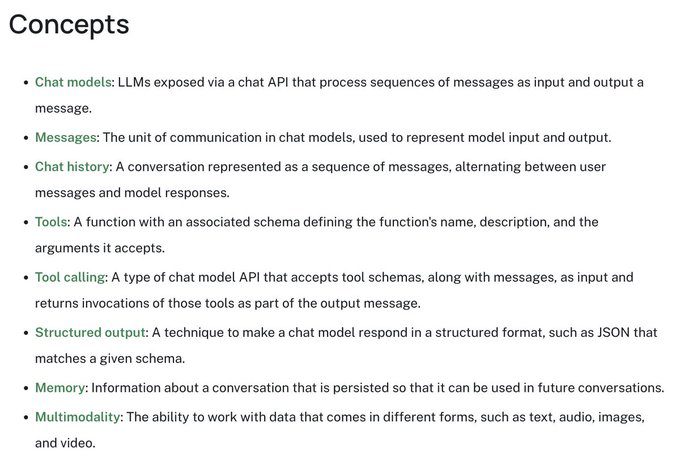Introduction to LangChain Conceptual Guides
LangChain has recently revamped its conceptual guides, making them an essential starting point for anyone interested in building applications using large language models (LLMs). The guides cover a wide range of topics including Chat Models, Tools, Multi-modality, Retrieval, and more. These guides are designed to provide clear explanations and diagrams to help developers understand the intricacies of LLM app development. You can access the guides here.
Key Components of LangChain Guides
The LangChain conceptual guides are structured to cover several critical areas in LLM app development:
Chat Models
Chat models are a fundamental component of LLM applications. The guides provide detailed explanations on how to build and optimize chat models, ensuring they can handle various conversational scenarios effectively.
Tools
The guides also delve into the tools available for LLM development. These tools are essential for building, testing, and deploying LLM applications. The guides offer insights into the best practices for using these tools to streamline the development process.
Multi-modality
Multi-modality is another crucial aspect covered in the guides. This involves integrating different types of data, such as text, images, and audio, into LLM applications. The guides provide strategies for effectively combining these modalities to create more robust and versatile applications.
Retrieval
Retrieval techniques are essential for accessing and utilizing large datasets in LLM applications. The guides offer comprehensive explanations on various retrieval methods, helping developers implement efficient data retrieval mechanisms in their applications.
Practical Applications and Use Cases
While the LangChain guides are an excellent resource for learning, it’s important to note that some developers have found the framework to be overly complicated and prone to errors. According to an article on Analytics India Magazine, LangChain is best suited for prototyping rather than production use. This sentiment is echoed by industry experts like Praveer Kochhar, co-founder of Kogo Tech Lab, who stated, ‘LangChain is not meant for production.’
Comparison with Other LLM Frameworks
LangChain faces competition from other LLM frameworks such as LlamaIndex. While LangChain offers a comprehensive set of tools and guides, its complexity can be a drawback for some developers. In contrast, frameworks like LlamaIndex may offer simpler and more efficient solutions for production use.
Future Prospects and Industry Trends
The AI/ML industry is witnessing a growing preference for simpler and more efficient tools for production. As a result, LangChain may need to address its complexity issues to remain competitive. However, the revamped conceptual guides are a step in the right direction, providing valuable resources for developers looking to explore the potential of LLM applications.
Related Articles
- ChatGPT: All That You Need to Know
- Beyond ChatGPT: 7 AI Tools to Enhance Your Productivity
- The Technical Mechanics of AI Chatbots: How They Work and What Powers Them
- Beyond Chatbots: Advanced NLP Techniques for More Natural App Interactions
- ChatGPT Prompt Frameworks: Enhancing Conversations with AI
},
Looking for Travel Inspiration?
Explore Textify’s AI membership
Need a Chart? Explore the world’s largest Charts database
